Hemp: A Game Changer for the Building Industry
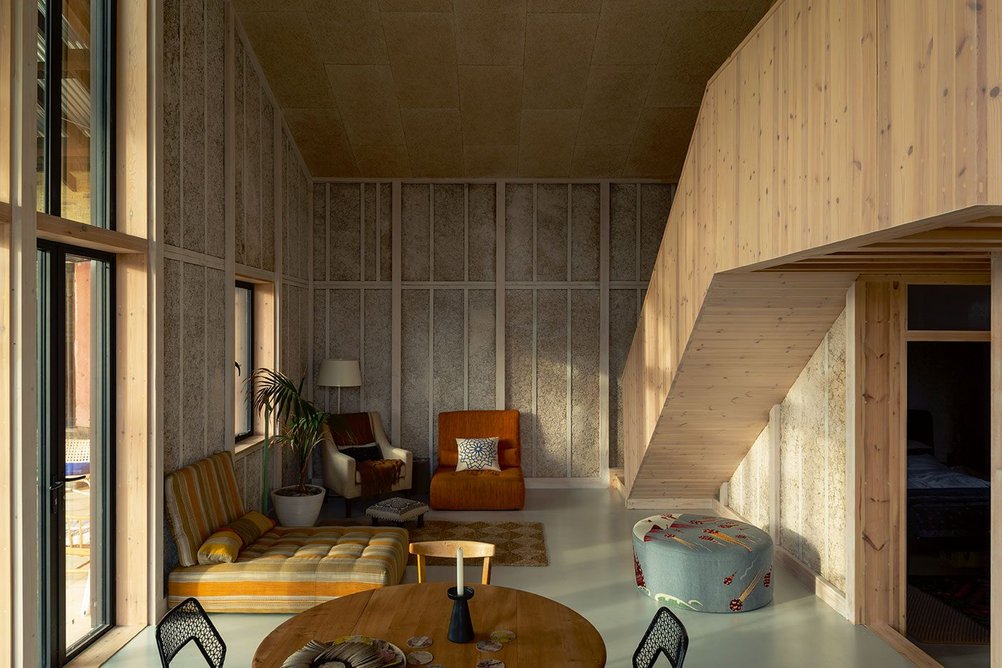
Inside Flat House, Cambridgeshire with hempcrete panels exposed — Oskar Proctor
In order to reduce carbon emissions, the building industry is in high demand for sustainable materials. Approximately 37% of energy- and process-related worldwide carbon dioxide (CO2) emissions are attributable to buildings and construction. This is because the sector heavily relies on fossil fuels, uses carbon-intensive building materials like concrete, steel, and glass, and emits greenhouse gases to heat and cool our structures.
Therefore, as an alternative to other building materials such as concrete, hemp is rapidly becoming one of the go — to sustainable building materials, here’s why.
But Health First! 🌿
Traditional building materials often contain toxic substances like formaldehyde and volatile organic compounds (VOCs). Hemp offers an alternative through the production of hempcrete. Hempcrete, a bio-composite material made from hemp hurds and lime, is non-toxic, breathable, and has excellent insulation properties. Using hempcrete in construction reduces our exposure to harmful chemicals and promotes a healthier indoor environment.
Time…Our Most Valuable Asset ⏱️
Since there are no cement seams or drying times like with regular concrete blocks, a building made with ready-to-use hemp blocks can be finished 20 to 30 percent faster than the average manufacturing schedule. What’s cool about hemp blocks is that they are simple to assemble they simply fit together like Legos which results in fewer employees being needed on the job site.
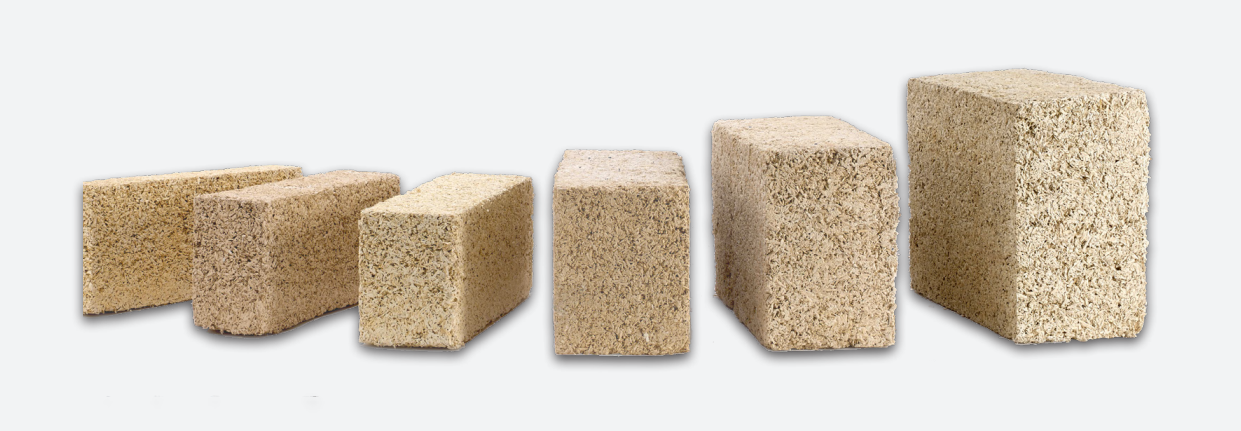
Hempblocks — app.2050-materials.com
Below are some newly added hemp products on our platform.

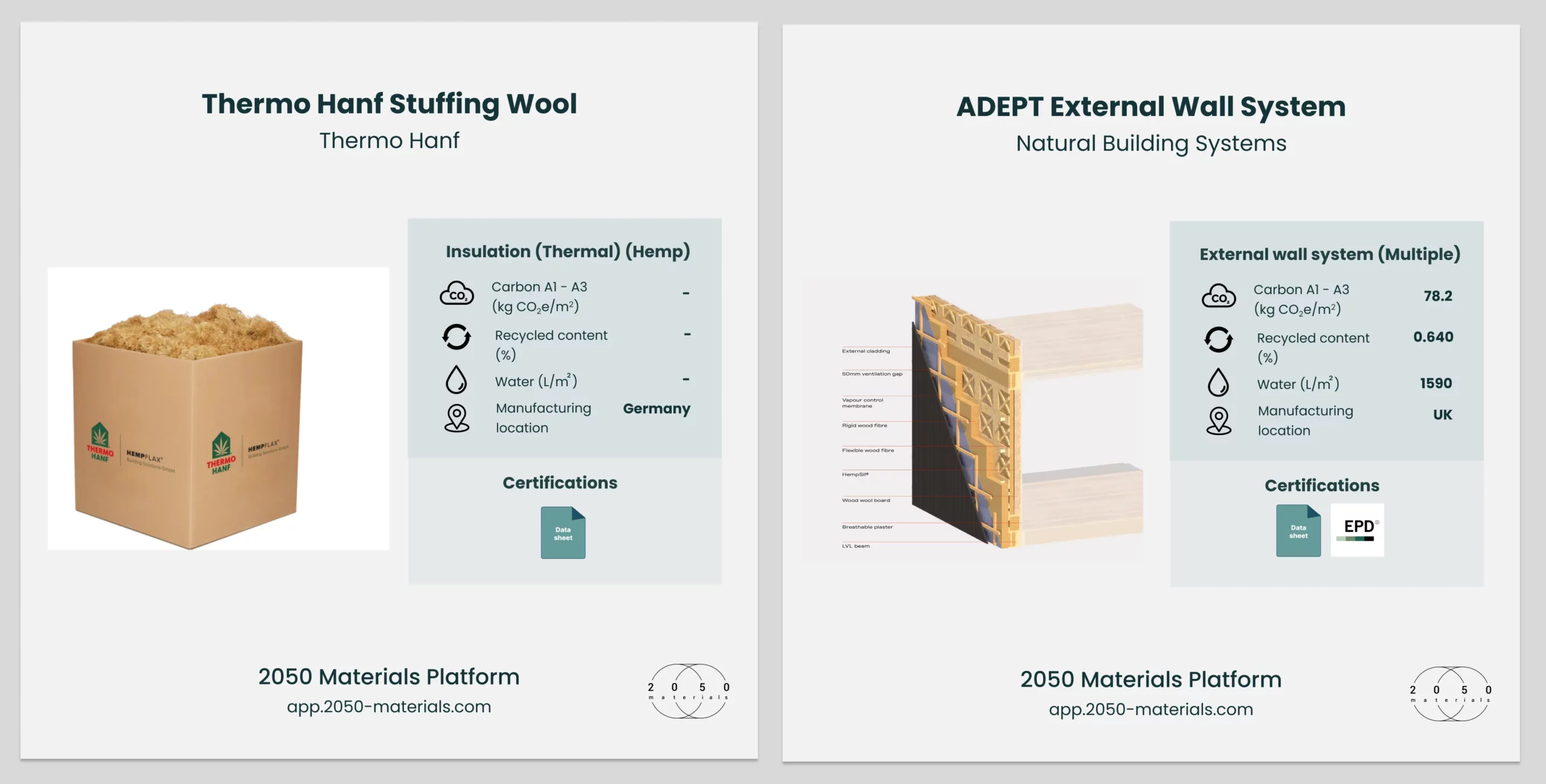
A By-product of Agriculture 🌾
The production of hemp is unusually high compared to other agricultural crops. According to a US Department of Agriculture research, worldwide yields of dry straw per acre ranged from 2.5 to 8.7 tons. This is an advantageous comparison to wheat straw yields of 1.25 to 2.5 tons per acre. No other plant offers as much biomass as hemp does in terms of the volume that may be used from a single harvest.
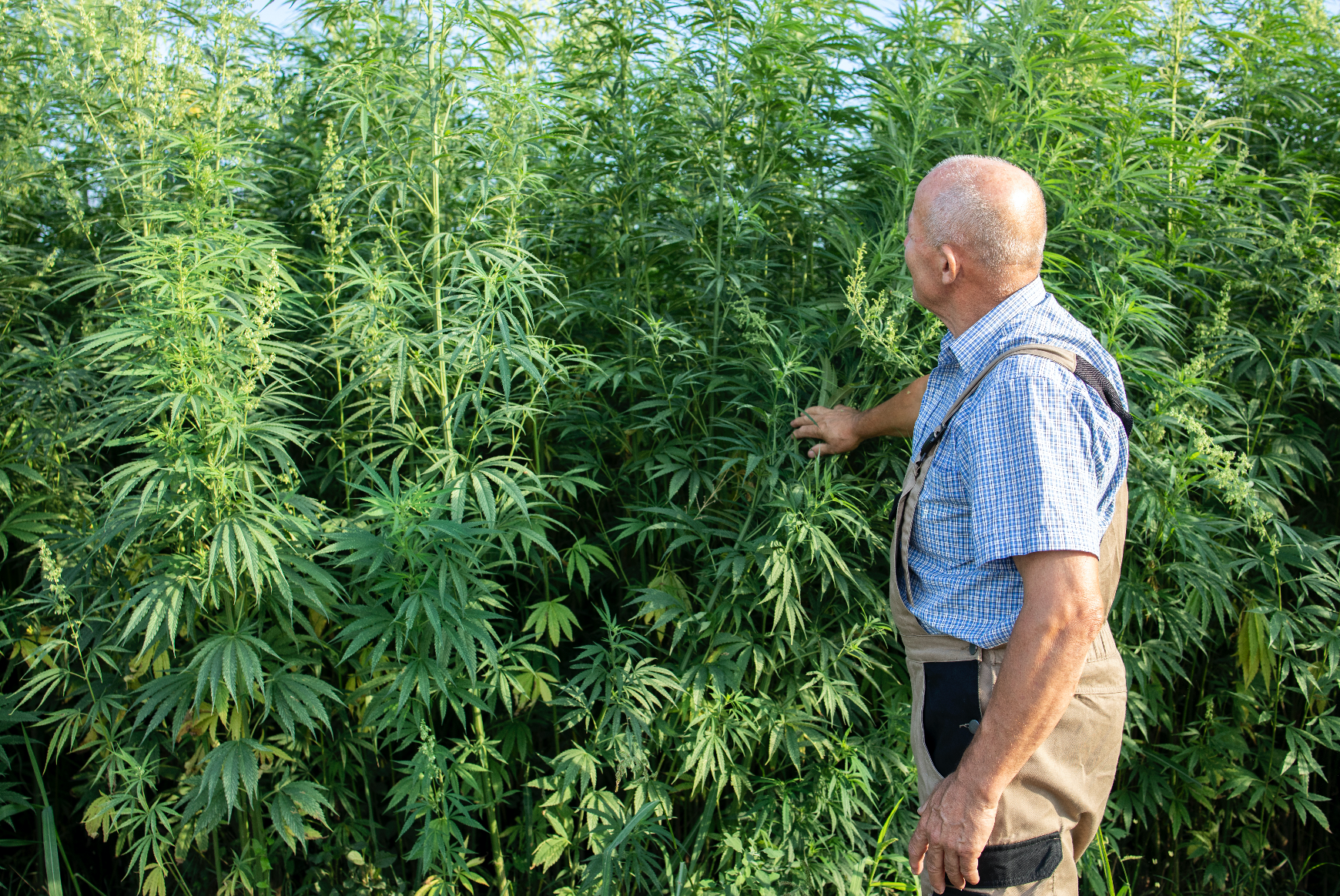
Hemp agriculture image by FreePik
Hemp's Unique Properties 🫧
Hempcrete is a totally permeable building material, meaning it has fully open vapour transmission even while it will prevent liquid water from going through the wall. The gaseous water that flows through buildings as humidity and steam is able to flow into the wall, pass through it, and escape on the other side without really condensing or having a dew point form within the body of the wall itself. This makes it the perfect material for rainy and temperature-variable climates since these natural structures produce a passive humidity control system that lowers the buildup of moisture, thus reducing the occurrence of issues like moulds and rot. Additionally, it helps to produce thermal inertia, a closed system in which water vapor serves as a heat sink to stop the building from being heated or cooled.
In comparison to conventional insulation materials, polyurethane-hemp fiber composites have “good insulating properties,” according to a 2020 study on the thermal properties of hemp.
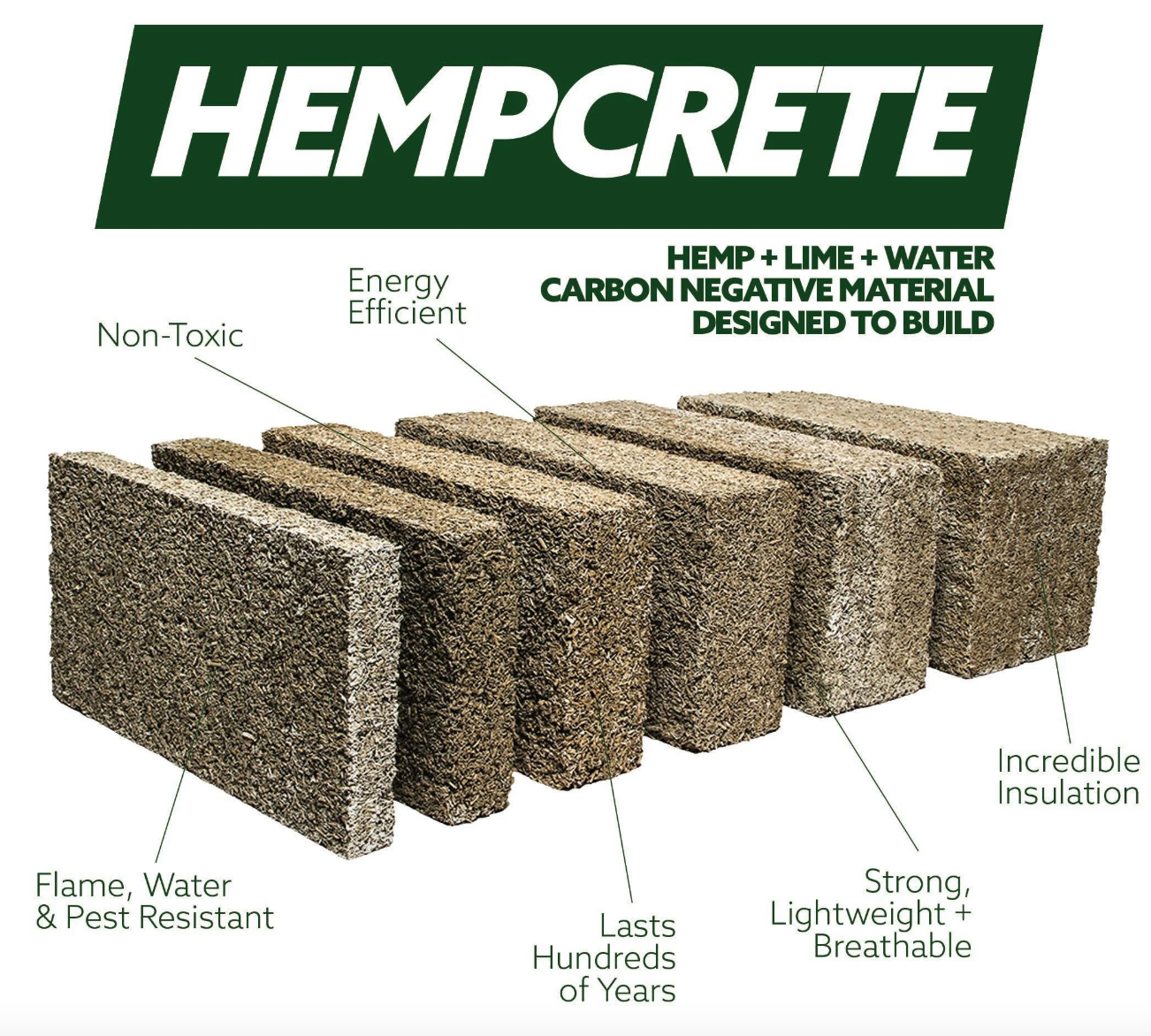
Hempcrete properties by Issuu
In an effort to encourage designers to research and implement other alternatives of insulation materials in their projects, we created Illustrated Guides to Insulation Materials that offer visual guides to understand the variety of insulation materials, their carbon and thermal performance and their classification per resource origin Hit the download button and check them out.
Diverse Environmental Advantages ♻️
The degree to which Hempcrete reduces energy consumption in the buildings it is used to construct, drastically lowering heating and cooling costs during the lifecycle of a building, is one of its main environmental benefits. There are benefits for industry as well such as emitting way fewer greenhouse gases than concrete.
Hemp’s ability to capture carbon could make building more environmentally friendly, assisting nations in achieving their net zero goals.
 "Optimizing the way we design, build, and renovate our buildings has a critical role to play in driving down emissions and enabling the UK to meet its climate targets." - Yetunde Abdul, head of climate action at the UK Green Building Council
"Optimizing the way we design, build, and renovate our buildings has a critical role to play in driving down emissions and enabling the UK to meet its climate targets." - Yetunde Abdul, head of climate action at the UK Green Building Council
Main Types of Building Products Made of Hemp
Hemp has been utilized in the production of various building materials. These materials take advantage of hemp’s strong fibers and environmentally friendly characteristics. Some building products made from hemp include:
- Hempcrete: Hempcrete is a bio-composite material made from a mixture of hemp hurds (the woody inner core of the hemp plant), lime, and water. It is used as a lightweight and insulating construction material for walls, floors, and roofs.
- Hemp Fiberboards: Hemp fibers can be processed and compressed to create fiberboards used for paneling, insulation, and flooring. They are a sustainable alternative to conventional fiberboards made from wood.
- Hemp Insulation: Hemp fibers can be used as an insulating material in buildings to reduce energy consumption and provide a more environmentally friendly option compared to traditional insulation materials.
- Hemp Plastics: Hemp fibers can be combined with other materials to create bioplastics, which can be used for various building components such as window frames, roofing tiles, and structural elements.
- Hemp Carpets and Textiles: Hemp fibers can be woven into durable carpets and textiles used for interior decoration and furnishings.
- Hemp Roofing Materials: Some companies have developed roofing shingles and tiles made from hemp fibers, providing an eco-friendly roofing option.
- Hemp Wallboards: Hemp fibers can be used to make wallboards that are suitable for interior partitions and ceilings.
- Hemp Oil-Based Finishes: Hemp oil is used as a natural finishing product for wood and other surfaces in buildings.
It’s important to note however that the availability and use of these hemp-based building products may vary depending on regional regulations, local industries, and advancements in technology.
The Growing Use of Hempcrete
Despite being mostly used in Europe and North America, the use of hempcrete is expanding due to the relaxation of rules and growing awareness of the substance’s numerous advantages.
Adopting environmentally friendly building materials, like hemp, could contribute to a change toward a construction methodology that makes use of natural resources that are acquired locally. Which includes capturing and storing carbon in buildings, as well as getting the majority of your building mass from fast-turnover crops as a way to provide low-carbon insulation.
In the new Phoenix Project in Lewes, East Sussex, Material Cultures intends to keep employing hemp. The concept, which was created by Human Nature and is intended to be a 700-home neighborhood constructed with sustainability at its core, will use hempcrete and locally sourced timber in the majority of the buildings.
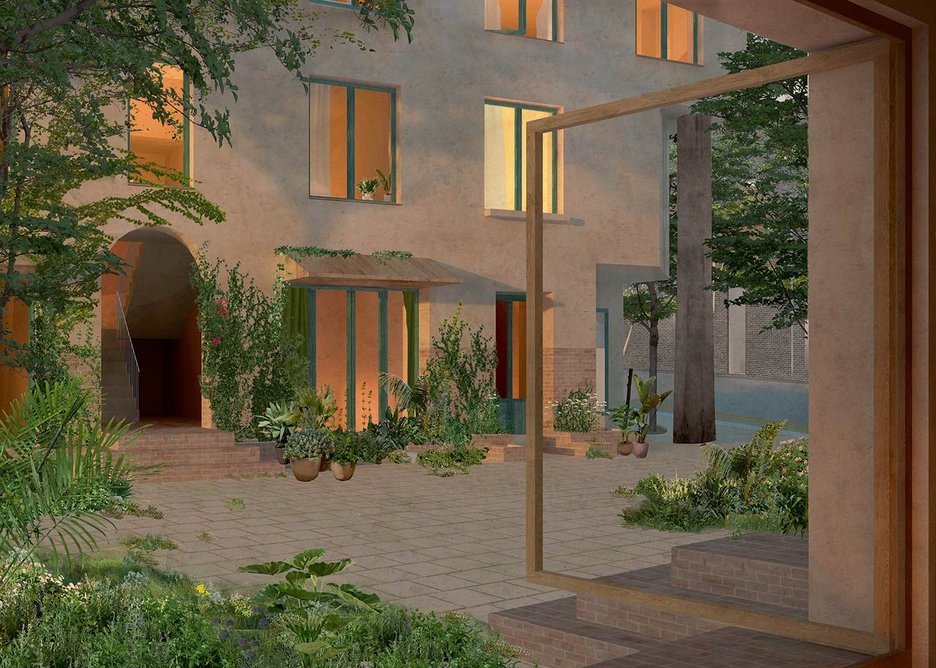
Pheonix Project housing — Material Cultures
 "There is no one solution to save the world, but for now, hempcrete remains a positive option." Thibaut Barrault - Co-founder of Barrault Pressacco
"There is no one solution to save the world, but for now, hempcrete remains a positive option." Thibaut Barrault - Co-founder of Barrault Pressacco
DOT Tool by 2050 Materials

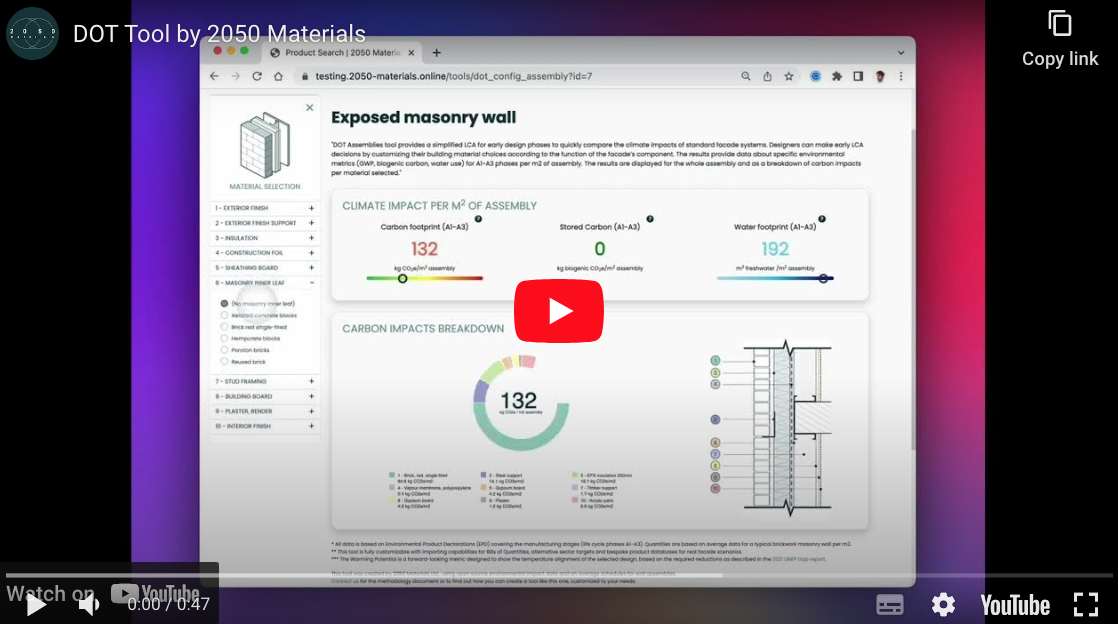
A Step Closer to Hemp Building Materials with 2050 Materials 🖥️ 🚀
Although a significant decrease in construction is what the environment really needs, it’s crucial that when you do build, you do so in ways that are resource-efficient, lean, and thoughtful. 2050 Materials brings you a step closer to a resourceful and transparent building process (make sure you are logged in). By accessing our platform and DOT tool you can:
1- Calculate and optimize the embodied carbon of your facade systems with ease through a simplified LCA for early design phases. 🏢 🌱 💚 With our dynamic application, you can customize and see the impact changing based on component and material selections. Export the breakdown and assembly to gain valuable insights. #LowCarbonFuture 🌍 🔍 📈
2- Customize your facade systems’ carbon impact by exploring different standard assemblies and material choices. From exposed masonry walls to future assemblies, our tool covers it all. 🧱 🏗️ ✨ Choose among a great range of materials like insulations with different thicknesses and U-values to achieve a low impact facade. ♻️ 🌿
3- Track the climate impact globally and carbon impact per product type, empowering you to make better earlier #LCA decisions for a greener future 🌲💡 #GreenConstruction
If you like this article, make sure you didn’t miss our previous piece on hemp here.
look at manufacturers with hemp based products here.
Sources:
Practice Architecture and Material Cultures — taking bio-based materials mainstream — RIBAJ
The concrete that helps the climate — BBC
In Search for Sustainable Materials, Developers Turn to Hemp — NY Times
The Benefits Of Using Hempcrete in Your Construction Projects — New Society Publishers
The buildings constructed from cannabis — BBC
Related articles
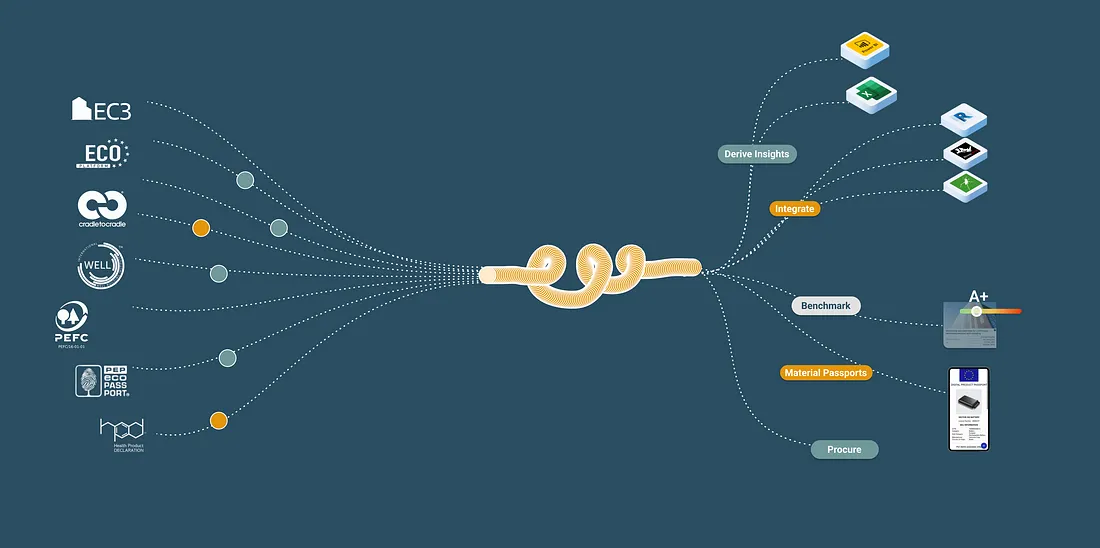
The Age of Integration — 10 Examples of Integrating Carbon Data in AEC, and Why They Matter
By integrating carbon data into the target-setting process, stakeholders can base their goals on real, actionable data, leading to more effective and sustainable project outcomes.
Read more
Net Zero is a Data Integration Problem
In recent years, numerous organizations in real estate and infrastructure have committed to ambitious net zero targets. This means reducing reliance on non-renewable energy and materials and adopting more sustainable design, engineering and procurement practices.
Read more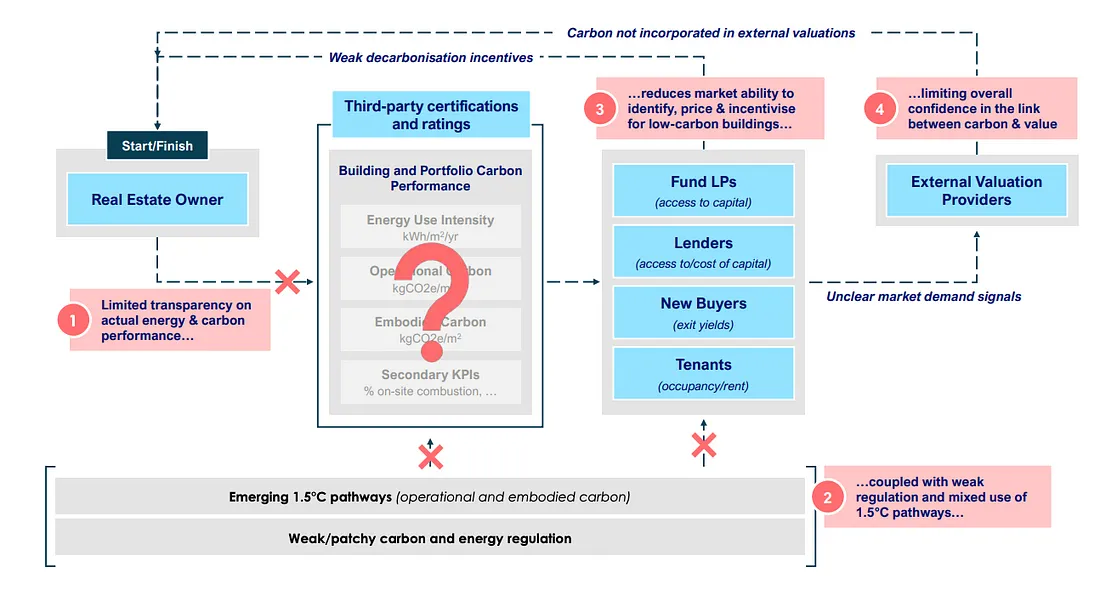
Tapping into the Low-Carbon Real Estate Market
This article is based on a paper by Leaders of the Urban Future (LOTUF) in partnership with Systemiq and highlights the required steps to decarbonizing in the real estate sector for a greener future.
Read more